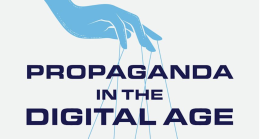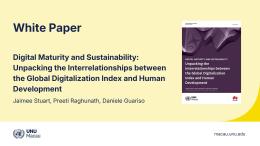The digital divide rears its ugly head amidst the ongoing COVID-19 pandemic. With much of society grinding to a halt, people look to Information and Communications Technologies (ICTs) to adapt to the evolving uncertainty and operate with minimal disruption. All of a sudden, companies are being forced to embrace remote working arrangements facilitated by various productivity and videoconferencing tools. School closures have led to moving classes online. Quarantine restrictions have intensified the use of digital technology to mediate effective communication among family members and friends.
Our current experience with COVID-19 shows that the transition to these extraordinary circumstances is far from smooth. More specifically, people without access to ICTs are even more disadvantaged than before. In many cases, the lifeline provided by technologies is only available to those who can access them.
At the end of 2019, ITU estimated that around 3.6 billion people remain offline. The situation is much worse in Least Developed Countries where an average of two out of every ten people are online. While progress has been made in bridging the digital divide, COVID-19 has brought to the fore how precarious access to ICTs is in many parts of the world and that access to unfettered and empowering ICTs remain a challenge to many people. We see this problem play out in terms of who has access to information and in the digital educational divide among others.
Access to credible information is crucial in the time of COVID-19. In response to our fragmented and often confusing information ecosystem, messaging apps and digital platforms have been recruited to disseminate accurate information related to the pandemic. Governments including Macao and organizations such as the World Health Organization have embraced digital technologies to provide accurate reporting on COVID-19. However, without a proportionate response to provide the same information through other channels, those who have no access to digital technologies find themselves unable to respond to the ongoing crisis with the right information. This is critical especially in light of the many misinformation and fake news about COVID-19.
In the field of education and learning, disruptions in the delivery of lessons to students and the shift to online learning have made the digital educational divide more pronounced. According to UNESCO, around 1.5 billion learners are affected by school closure caused by COVID-19. This represents 89.4% of total enrolled learners globally. Unfortunately, a shift to virtual classrooms can’t be done overnight, especially when needed infrastructure - including stable electricity supply in addition to computers and internet connectivity - are lacking. Concerns have also been raised on how those who are already disadvantaged with access to ICTs including girls, will suffer more because of the ongoing situation.
This brings us to the point that while the current pandemic is new to many of us, the digital divide has been with us for quite some time now. Differential access to ICTs across many fault lines including gender, age, and socio-economic status continues to hamper people’s meaningful participation in the digital society. On the flip side, that digital divide is an old problem means that we have some basic level of understanding and tools so as not to re-invent the wheel on how to investigate its causes, process, and potential remedies.
What does this mean for the ICTD community? For ICTD researchers and practitioners, what the COVID-19 pandemic does is provide an impetus for more research, action, and partnerships on the digital divide. Against the backdrop of increased focus on new technologies including blockchain and artificial intelligence, the current situation’s invitation to re-examine old staple ICTD issues such as digital divide should be welcomed and embraced.
Suggested citation: Don Rodney Junio., "Digital Divide in the Time of COVID-19," UNU Macau (blog), 2020-04-15, https://unu.edu/macau/blog-post/digital-divide-time-covid-19.





